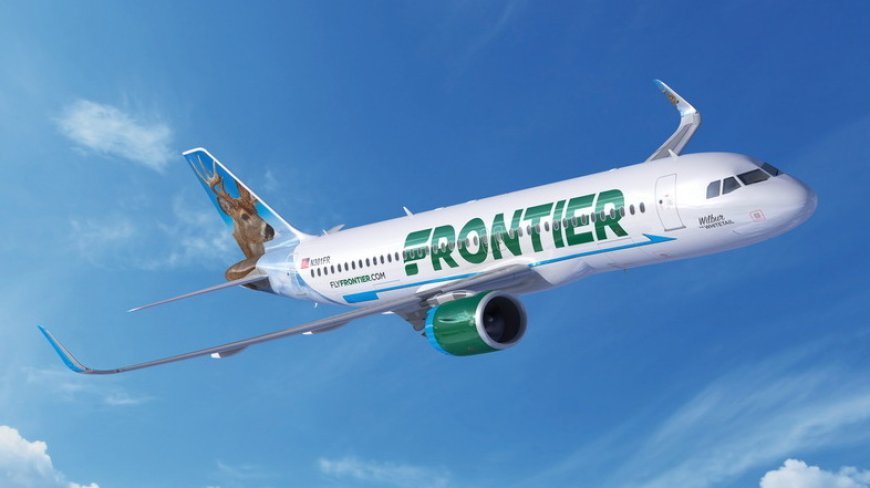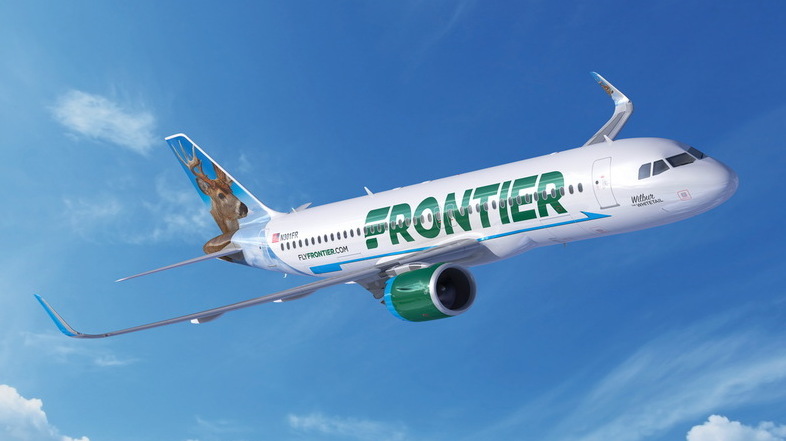Frontier Airlines and United Airlines Warn of Domestic Flight Reductions in 2026, Impacting Travel Options for US Flyers


Frontier Airlines and United won’t see big cuts to domestic flight capacity until 2026, but have both warned of more significant reductions. They are the latest in a wave of cuts as airlines pull down their schedules to match faltering demand on flights that are running well below half full. Passengers in many cities will experience fewer flights, especially off-peak hours; travel plans will suffer consequently, as the non-operationality of airlines like Frontier and United can attest.
Frontier Airlines brought in $929 million in revenue during the second quarter of 2025, but posted a net loss of $70 million. The CEO Barry L. Biffle in response to the loss issued a statement that the results were in line with previously provided guidance and the company remains on course to achieve profitability at 2026.PLL But this optimism comes with a massive caveat: A stark warning about the future of domestic air travel from its CEO. Frontier Airlines and most of the rest of American aviation are getting ready for a broad industry change that will make it likely that far fewer planes will be flying in the skies, something that would bring across-the-board changes for both airlines and flyers.
Fewer flights will be available due to a decreased capacity, meaning passengers will have fewer options for travel especially during off-peak hours and days. Frontier as well as United Airlines have said that the cuts are designed to be a major part of their strategies going forward while airlines recalibrate in a dynamic market.
The Airline Industry Faces Capacity Cuts
Airline CEOs, including Biffle of Frontier Airlines and Scott Kirby of United Airlines, have both warned that the industry is heading toward a reduction in flight capacity. This change is driven by the financial reality that many of the flights currently being offered are simply not profitable. According to the CEOs, domestic air travel demand is not sufficient to maintain the current flight schedules. In response, airlines are preparing to cut back on flights, which will result in fewer choices for travelers and potentially higher fares on the remaining flights.
Biffle’s warning was clear: “There’s going to continue to be reductions in capacity in this industry.” He explained that many flights being offered are not filling up as expected, making them financially unviable for airlines. This pattern is expected to continue, leading to a scaling back of flight schedules and the removal of certain routes, especially those that operate during less busy times.
Reduced Flight Options: What It Means for Travelers
As airlines reduce capacity, travelers can expect fewer flight options, especially during off-peak times. For those who have grown accustomed to traveling at quieter hours or days, such as mid-week flights or late-night services, the availability of these flights may dwindle. Airlines like Spirit and others have already begun trimming back on flights during these less-popular times, anticipating a continued reduction in domestic demand.
This narrowing of choices could make booking travel more challenging. Passengers may find that flights that have historically been available on certain days or times are no longer an option. For instance, if you typically book your flights on a Tuesday evening or early morning on a weekend, you may find that these flights no longer operate, leaving you with fewer choices for travel.
Why Are Airlines Cutting Back on Flights?
The core reason for the reduction in flight availability lies in profitability. Airlines, including Frontier and United, have been offering a wide range of domestic flights to meet demand, but with many of these flights running below capacity, they are not generating enough revenue to cover operating costs. As a result, airlines are adjusting their strategies to better align capacity with demand.
The decision to reduce flights is a necessary step for airlines to maintain financial sustainability. While this may seem like a sign of weakness in the airline industry, it is, in fact, a strategic move to avoid the financial losses associated with flying empty planes. Airlines are aiming to streamline their operations and offer more targeted flights that better meet the needs of passengers, particularly on the most popular routes.
The Impact on Smaller Airlines
While major carriers like Frontier and United are making their adjustments, smaller airlines will also feel the effects of these capacity cuts. As large carriers scale back operations, smaller regional airlines may face heightened competition for the remaining profitable routes. Additionally, smaller airlines may have to adjust their own flight schedules to account for the shift in demand, which could lead to even fewer options for travelers.
Not every airline is implementing capacity cuts universally across their operations. Some, like Spirit Airlines, are still focusing on maintaining a broad network, but even they are making adjustments to target the most profitable flight times. The overall trend across the industry, however, indicates that the future of domestic air travel in the U.S. will involve fewer choices, particularly for less popular travel times.
How Will These Reductions Affect Airfare?
As airlines cut back on flights, passengers may see a change in airfare pricing. With fewer flights operating, there may be a tightening of supply, potentially leading to higher prices on remaining flights. For travelers, this means that booking in advance will become even more important to secure the best fares. Additionally, passengers who are flexible with their travel times may find it more difficult to find affordable options, as airlines focus on the most profitable routes.
Travelers who rely on budget airlines like Frontier may find that prices increase due to the reduced availability of flights. While airlines will continue to operate on competitive pricing models, the reduction in available flights could create a situation where demand outstrips supply, driving up prices for remaining seats.
How Airlines Plan to Cope with Reduced Capacity
To manage the reduction in capacity, airlines will need to balance their flight schedules more efficiently. This includes removing less-profitable flights, reconfiguring routes, and increasing the frequency of flights on more popular routes. Airlines will also focus on improving their service offerings, adding more premium services to the remaining flights to attract passengers who are willing to pay more for the convenience of flying during peak hours.
In addition to reducing flights, airlines will likely focus on improving operational efficiency by optimizing their fleet utilization. This could involve flying larger aircraft on popular routes to accommodate more passengers per flight. However, this strategy may not be enough to offset the overall reduction in capacity, and travelers will need to adjust their expectations accordingly.
What Will 2026 Bring?
What the airline industry of tomorrow might look like Travelers will need to adapt as Frontier, Southwest, United and other major carriers scale back their operations. As the airline industry changes to accommodate this, it’s likely that some travelers will see a decrease in convenience they used to enjoy.
Passengers can expectantly prepare for this change in the upcoming days by booking their travel a little early and can be flexible with their travel dates. And as airlines pare down capacity, getting in early will be key to nabbing the best flights at the lowest prices.
Both Frontier Airlines and United Airlines last week openly stated the industry faces domestic cutbacks in 2026 as it’s a financial strain to operate flights on routes where all too often, approximately one-half of rows left empty. This means that American travelers will have fewer choices available to them, particularly during slow times of the year, which in turn increases the necessity for planning ahead with limited flights on offer and probably pricier tickets.
In the mean time, the pilots and air travelers will have to manage under shifting skies. Those changes may be essential to the industry’s financial viability, but they will also alter the nature of how we travel for decades.
The post Frontier Airlines and United Airlines Warn of Domestic Flight Reductions in 2026, Impacting Travel Options for US Flyers appeared first on Travel And Tour World.






